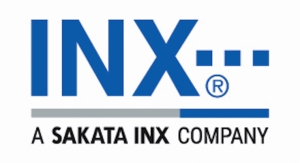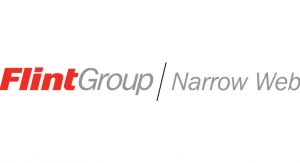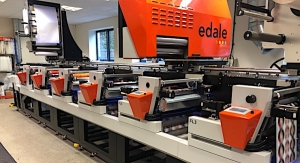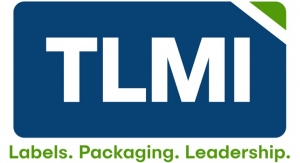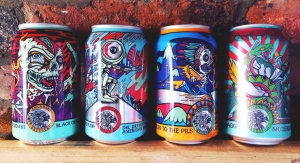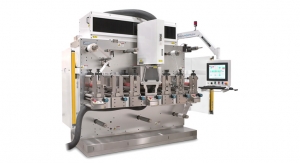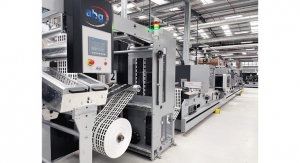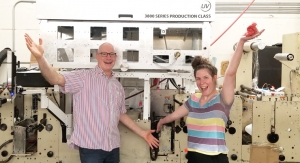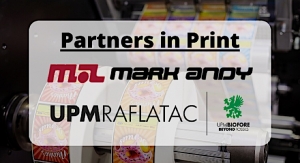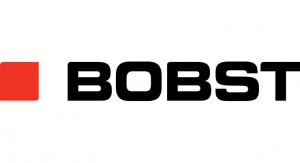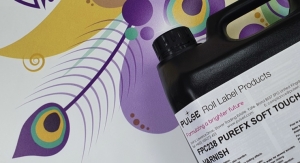Greg Hrinya, Associate Editor03.21.16
The market is currently offering higher-quality ink systems, which provide better adhesion, color strength and faster printing speeds. Water-based inks, specifically, run at higher press speeds and are lower in viscosity. According to Joe Kelly, VP – technical director for INX International Ink Co., inks also come with “greater improved rheology and are more highly pigmented. Thus, they can achieve targeted process densities with high line count and ultra low volume anilox rolls.”
On the UV side, Jonathan Graunke, VP, UV/EB Technology at INX International, says, “UV ink advancements include lower viscosity/better flow, fine line anilox, low odor, adhesion to a wide variety of substrates, lower hazards, and low migration food packaging products.”
“In the narrow web printing market, there is now greater end use application diversity than ever before,” says Jeremy Teachman, field marketing manager, Water Inks and Narrow Web Tag and Label, Sun Chemical. “We’re seeing printers diversify their businesses by expanding into new flexible packaging structures and components, as well as new container labeling applications. This means new challenges for inks to perform in different conditions. We will need ink systems that can allow for that type of business diversity in the future. Inks are being asked to do something new for converters, and having a solution to accomplish this challenge is key.”
Guillaume Clement, vice president of Global Narrow Web, Flint Group, states that inks have become far more consistent over the years, as well. “There is a very high level of consistency, and that’s really what the customers require,” he says. “High-quality consistent inks are something that’s on the rise in the market. At Flint Group, we have a fantastic level of consistency. Number two is the speed. What has changed a lot is the inks are now able to cure at faster speeds, and that has a lot to do with the equipment.”
According to David Sambo, vice president of offset sales at INX International, inks must also withstand what is known as the drop test. “In narrow web, our efforts in the cosmetics industry with products like translucent substrates have been significant because they’re brittle,” explains Sambo. “If your ink dries too hard and the chemistry is too hard, it actually will shatter that clear cosmetic label, whether it’s cologne or lipstick or whatever. It’s called a drop test and they hold [the product] up five feet and drop it. If the ink is too brittle, it shatters the whole package.”
Industry leaders offer various ink products to the narrow web market. On the water side of the market, INX International has a full range of inks for coated and uncoated substrates, with and without overprints; inks for surface prints on films; inks for a variety of laminations applications, and systems that satisfy the specific requirements of the expanding shrink label category.
Siegwerk also offers high-quality water-based inks, as well as solvent-based, and UV/LED ink systems. Overprint varnishes, adhesives, metallic inks are available, too. “We see interest and transition from standard UV to low-migration systems, due to increased requests from brand owners and consumer organizations,” states Charity Aalbers, marketing coordinator at Siegwerk. “We also have seen more converters seriously considering LED-UV for new presses or retrofit of existing equipment. This is mainly due to better availability of inks and varnishes, as well as new LED low-migration systems coming into the market.”
Sun Chemical provides products ranging across water-based, solvent-based and UV-cured flexo inks that cover a comprehensive application base, which includes labels, flexible packaging, paper packaging, shrink sleeves, folding cartons and more. The company also provides a complementing portfolio of coatings, varnishes and adhesives.
In the UV market, INX has a full range of flexo products, including inks for the tag and label market, specialty films, shrink films, outdoor products, compliant low migration products and LED-UV offerings.
“UV inks represent most of the growth in narrow web sales,” says Kelly of INX. “They are ideal for short runs, fast turnarounds, low maintenance and consistent print quality, but water inks are lower cost and, for good reason, have dominated the narrow web market for years.”
“Customers who are successful in UV have done years of cost modeling to find the balance of ink cost, compared to running cost,” adds Graunke. “UV enables an improvement in print stability, potential for reduction in cost of equipment operation, and air permitting advantages make UV a recommended choice for some.”
The major ink manufacturers have developed products to enhance a wide range of substrates. Many of the new inks on the market today are finding increased use with films, lamination and shrink, as well as traditional coated papers. Converters are also experimenting with ways to utilize ink for specialized graphics and flexible packaging materials. In addition, high brilliance metallic inks and high gloss or matte coatings are frequently used in the health and beauty markets. Sun Chemical, for example, manufactures low migration and low odor inks for the food and beverage marketplace to ensure the safety of food products in packaging.
“It is important to note that the main factor in a company’s decision to use flexo or UV flexo ink depends first on their current capabilities and equipment,” explains Teachman. “So in most cases, making product choices between technologies is constrained by those capabilities. However, as a general market trend in narrow web printing, UV flexo continues to grow at the expense of water-based because of its versatility and utility, despite the higher costs associated with the products themselves and associated equipment and supplies.”
Flint Group Narrow Web has found success with Flexocure Force and Flexocure Ancora. Flexocure Force serves as Flint’s main UV flexo ink, while Ancora inks are used for pressure sensitive food packaging labels. Flint’s products are also commonly requested for pharmaceutical labels. The company does nearly 70% of its business on pressure sensitive labels, but Clement notes that there are growing narrow web markets in shrink sleeves and flexible packaging. “This is quite dynamic in North America,” he says. “The flexible packaging segment was almost non-existent 10 years ago, but now it’s starting to become important and customers are dedicating themselves to this segment.”
Like most areas of the printing industry, customization has made its way to ink. “Customers are enthusiastic about the products, the depth of technical resources, and on-site service staff working hand-in-hand with production management, operators and supervisors,” explains Kelly. “Standard ink systems are not always best suited to customer needs, so the ability to customize to the specific need is much appreciated.”
Photos courtesy of Flint Group Narrow Web
Actega North America has an Innovations Lab to deal with any potential customer issues. Its portolfio handles water-based and ink systems on almost any substrate, from paper to plastic to film to foil. “When we do run into the occasional situation where our inks come across a stubborn substrate, our Innovations Lab will dedicate its resources to finding a solution using state-of-the-art testing equipment and the experience of our researchers,” says Chris Calomino, marketing and communications manager, Actega North America.
Finding a cure
In order for an ink to find success in the label market, it needs to withstand the curing process.
Today, many converters are experimenting with LED curing because it does not distort the substrate. A process that has been in the works for approximately five years, LED has begun replacing standard UV curing in some print shops. LED has emerged has a more cost-efficient option that requires less energy and produces faster throughput.
“Ink development trends will continue to be driven by changes in regulatory rules, the desire for ‘eco’ labeling and the substrate changes that go with the ‘eco’ labeling,” explains Graunke. “Public perception of safe packaging continues to drive product development to deliver the most consumer-friendly solutions. New technologies in UV curing, such as LED curing, are driving ink formulation changes to accommodate the equipment.”
Flint Group has launched a UV flexo product line that is compatible with LED curing, as opposed to UV mercury lamps. “The Flexocure Force and the Flexocure Ancora require UV mercury lamps,” says Clement. “We use mercury lamps to make the photoinitiators react in the process. Now, there is new technology using LED lamps, and we have developed dedicated product lines fitting with this technology.”
EkoCure is a UV flexo ink for LED, and Clement adds that “there is a great future for these product lines.” Eventually, Flint will offer a low migration product portfolio for inks curable with LED lamps. These products are still in development.
“With LED curing coming, this is the first door to talk about less waste, which is critical to the customer,” says Clement. “You have better curing because of less energy – LED lamps are consuming much less energy than UV mercury lamps – so that’s new and something that is catching on.”
‘Green’ inks
According to Aalbers, sustainability “has been and continues to be at the forefront of the industry.” Converters and brand owners are placing an increased emphasis on topics like energy saving, recycling of liner materials and manufacturing inks from renewable resources. Sustainable offerings, such as using LED curing over conventional UV, can sometimes sway customers from one company to another.
“Sustainability will always be a driver in our industry, as it should be,” says Calomino. “Actega North America prides itself on providing sustainable solutions to meet customer requirements. Whether it is a benzophenone-free product or has specific regulatory requirements, we have formulations and good manufacturing practices to meet most of these needs.”
In addition to its portfolio of water-based and UV curable inks, Actega offers MiraFoil, which is a flexo ink that serves as a sustainable alternative to foil board or metalized polyester. This allows for recycling through the de-inking system.
Nowadays, de-inking the substrate is a critical part of the process, as is finding inks that release better from the substrate itself. INX International has also started using vegetable oils in their UV inks versus petrol-fired resins. “Now they’re doing it with vegetable-based oils, and that in itself is remarkable because we’re up to about 12%,” adds Sambo. “Before, you could get about 2% of corn-based oils and soybean oils in there. And that’s with no impact on the runnability of the ink and no impact on the adhesion, because that’s what we’re always worried about.”
Ink manufacturers must juggle several factors during production. They must weigh the benefit of high-quality graphics and environmentally friendly products. In most cases, consumer interest will drive the market. “Sustainability, as a major determinate of the purchasing decision, grows and wanes in a cycle of consumer interest,” explains Kelly, adding, “Sustainable water inks formulated with naturally derived resins are commercial and available. But honestly, pigments will continue to be petro-chemically derived ‘graphic arts’ grade as needed, to print high-quality graphics.”
According to Clement, who came to Flint Group from the paper industry, the sustainability issue is viewed with greater regard in substrates as opposed to inks. “I think the main reason is because the substrate remains the big part of the cost and volumes, so most of the printers focus first on the substrate,” explains Clement. “I think there is a tendency for higher sustainability concerns with substrates and less with inks and coatings at this point. With inks and coatings, everything related to health is high on the agenda because of the contact with end users. I think when we talk about sustainability, we essentially talk about the economical side of it to be more efficient.”
Ultimately, inks that contribute to less waste will help not only the environment but also a company’s bottom line. According to Teachman, “Printers are always looking for ways to reduce waste, and so it is important that the inks we provide consistently perform on press, come to color quickly and meet printer requirements. Inks that do this help to achieve a printer’s objective of reducing waste as part of their own sustainability initiatives.”

